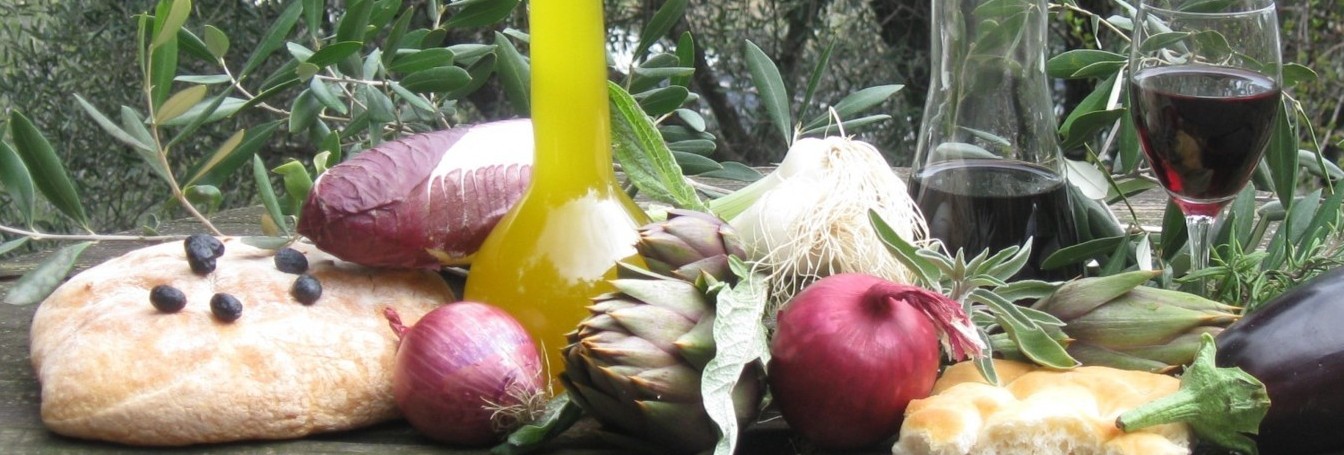Did you know: The smell of basil acts as an anti-depressant, while eating fresh basil helps build your immunity system and defends your body against common cold and flu?
Fresh pesto is one of my absolute favorite summer indulgences. There’s nothing quite like picking basil from a container out on the deck (or from the bounty in your garden) and whipping up a quick batch. You can dress pasta with it, use it as pizza sauce, set it out as an appetizer with dipping bread, or if you’re like me – stand in the kitchen with a bowl of it and go through cracker after cracker scooping up that wonderful fresh basil goodness (oops).
The ancient Romans ate a paste called moretum, which was made by crushing cheese, garlic and herbs together. Basil, the main ingredient of modern pesto, likely originated in India and was first domesticated there. Basil took the firmest root in the regions of Liguria, Italy and Provence, France. The Ligurians around Genoa took the dish and adapted it, using a combination of basil, crushed garlic, grated hard cheese (a mix of parmigiano reggiano and pecorino or just one of the two), and pine nuts with a little olive oil to form pesto. The first mention of recipe for pesto as it is known today, is from the book La Cuciniera Genovese written in 1863 by Giovanni Battista Ratto.
Pesto is traditionally prepared in a marble mortar with a wooden pestle. First, garlic and pine nuts are placed in the mortar and reduced to a cream, then the washed and dried basil leaves are added with coarse salt and ground to a creamy consistency. Only then is a mix of Parmigiano-Reggiano and Pecorino added. To help incorporate the cheese a little extra-virgin olive oil is added. In a tight jar (or simply in an air-tight plastic container), covered by a layer of extra-virgin olive oil, pesto can last in the refrigerator up to a week, and can be frozen for later use.
Pesto is commonly used on pasta, traditionally with “Mandilli de Sæa” (Genovese dialect – literally “silk handkerchiefs”),trofie.Potatoes and little green beans are also traditionally added to the dish, boiled in the same pot in which the pasta has been cooked. It is sometimes used in minestrone. Pesto is sometimes served on sliced beef tomatoes and sliced boiled potatoes.
The king of herbs, basil herb is one of the oldest and popular herbal plants rich in much notable health benefiting phyto-nutrients. This highly prized plant is revered as “holy herb” in many traditions all around the world.
What isn’t as well know are the various other herbal uses of Basil. It is a traditional remedy that has been used in various cultures for hundreds of years for many uses besides cooking. These are some uses:
- Calming the Stomach– The Italians may be on to something with adding Basil to everything. It is thought to have a calming effect on the stomach and 1/2 teaspoon of dried or fresh Basil Leaf in water can often help sooth indigestion and alleviate feelings of fullness.
- Coughing and Colds– I’ve heard some friends suggest using Basil leaf to help alleviate coughing and colds. They chew fresh leaves to calm coughing or make a calming tea of dried basil to help sooth illness.
- Facial Steam for Headache: A facial steam with dried basil leaf can help alleviate a headache. Add a tablespoon of dried basil leaf to 2 cups of boiling water in a large pot. Carefully lean over the pot, cover head with a towel and breathe in the steam for 5-10 minutes until headache starts to subside. Bonus, you get to smell like an Italian restaurant for the rest of the day!
- Antibiotic properties: According to Mountain Rose Herbs: “European scientists are investigating the use of basil oil as treatment for antibiotic resistant infections with Staphylococcus, Enterococcus, and Pseudomonas.”
- Stings and Bites: If you are working outside and get bitten or stung by an insect , chewing up a basil leaf and applying to the bite will help relieve the pain and draw out the venom.
- Ear Infections: According to Mountain Rose Herbs: “The essential oil is antibacterial, and drops of basil oil may relieve ear infections.”
- Blood sugar: There is some evidence that Basil can help level out blood sugar if consumed regularly and drank as a juice or tea.
- Stress Reduction: Some herbalist suggests adding 2 cups of strong Basil Leaf tea to a warm bath to help reduce stress and facilitate relaxation.
BASIL is a symbolic product from Liguria and it is strictly connected with “pesto”, the by-product that made it famous . Once it was a holy plant and a cure for love-sickness.
Today the link Liguria-Basilico is inseparable. It is the extraordinary climate of this region that makes this plant so scented and gives it a balanced taste. Today, as like yesterday it is a precious plant and it is cultivated with highly developed and rational processes.
source: wikipedia
http://www.amoriearomi.it/www.sv.camcom.gov.it/ www.browneyedbaker.com/http://wellnessmama.com/








